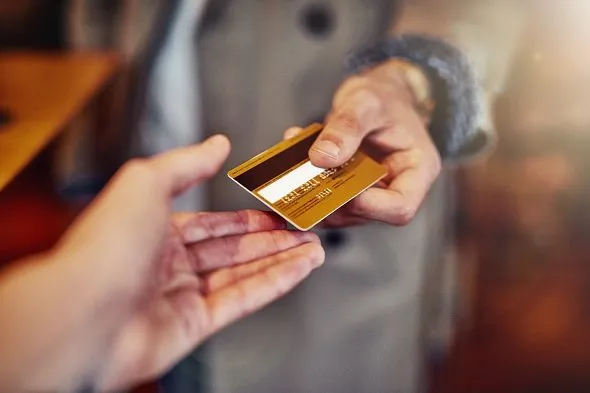
Signing the back of your credit card is an important security step for protecting your card’s information should it fall into the wrong hands. Merchants are supposed to check that the signature on the card matches the signature on the sales receipt as a security precaution. If a card has no signature on the back, they aren’t required to process the ensuing payment. You also have the option of writing “See ID” on your cards, in which case the merchant can match the name on your card to your ID.
Should You Sign the Back of Your Credit Card?
Signing the back of your credit card is always better than not, without exception. It’s another step your credit card company uses to try and keep your personal information as safe as possible. When used in conjunction with the card verification value (CVV) on your card, it creates a line of defense should a fraudster try to swipe your plastic.
While the signature itself doesn’t protect you, the ability for a salesman to match it to your existing official signatures is where its value lies. This is done most commonly with your driver’s license, or if you’re abroad, your passport is a fine stand-in. In other words, taking a few seconds to sign that little black or white strip could be the difference between your identity being stolen and not.
Signing Your Mastercard Credit Cards
Mastercard urges merchants in its payment network not to accept charges from customers with unsigned credit cards. On the back of every Mastercard, it even says “not valid unless signed.”
The company tries to instill in merchants that they should not process customer transactions unless the customer’s signature appears in the signature space on the back of the card.
If the card has no signature, merchants are to request the customer sign the card. A merchant also will need to see a confirming form of identification.
Signing Your Visa Credit Cards

At Visa, merchants must verify that the signature on the back of any card matches the customer’s signature on the transaction receipt and any identification. They want to know you are who you say you are and recreating the same signature on demand when you sign for a credit card transaction is one way to do it.
Visa considers an unsigned credit card to be invalid. The words “Not Valid Without Signature” appear above, below or beside the signature panel on all Visa cards. Turn over the card and you’ll see it. And like Mastercard, Visa urges merchants not to accept unsigned credit cards.
Let’s say a customer presents an unsigned Visa card to a merchant for payment. Visa requires a merchant to check their government-issued ID.
Where permissible by state law, the Visa merchant may also write the customer’s ID serial number and expiration date on the sales receipt. Beginning in California in 1971, the recording of personal information during credit card transactions has become illegal, with the passage of the Song-Beverly Credit Card Act.
Visa also instructs merchants to ask the customer to sign the card, within full view of the merchant. They then check that the customer’s newly written signature on the credit card matches the signature on the customer’s ID. If a customer refuses to sign a Visa card, the card is considered invalid and cannot be processed. Merchants will then have to ask the customer for another form of payment.
Signing Your Discover Credit Cards
Discover keeps things very simple. The company urges its cardholders to sign the backs of their Discover cards as soon as they activate them. This is because the signature makes the card valid and a cashier may decline if it doesn’t have one.
Signing Your American Express Credit Cards
American Express also urges retailers to compare a customer’s signature on the back of an American Express card with the transaction sales receipt. And if an American Express card has no signature, the clerk is to request a photo ID of the customer with one. Following this, they must request the customer sign the back of the American Express card and the sales receipt while the clerk is holding on to the customer’s photo ID.
Writing “See ID” in Place of Your Signature
Writing “see ID” or “check ID” on a credit card might seem like a great way to protect from fraud. But it actually may invalidate the card. That’s because only your signature that matches with a signature on a sales receipt is acceptable. In some cases, the merchant may ask you for another card to make your purchase. To save yourself from a slower-than-needed transaction at the cash register, sign your credit card as intended.
Tips for Protecting Against Credit Card Fraud

- Only carry the credit cards you need. When you travel, keep a list of the credit cards that you have with you. Make note of their full account numbers and expiration dates, as well as contact numbers for the issuers. It will come in handy if something should happen to your wallet, phone or both when traveling.
- Go paperless and start checking your credit card statements online to avoid having to keep and shred your paper statements. Just be sure to keep your online passwords in a safe place and to update them from time to time.
- Managing your credit cards is a part of your long-term financial plan. A financial advisor can help with your planning for the future. Finding a qualified financial advisor doesn’t have to be hard. SmartAsset’s free tool matches you with up to three financial advisors who serve your area, and you can interview your advisor matches at no cost to decide which one is right for you. If you’re ready to find an advisor who can help you achieve your financial goals, get started now.
Photo credit: ©iStock.com/PeopleImages, ©iStock.com/hsyncoban, ©iStock.com/RichLegg